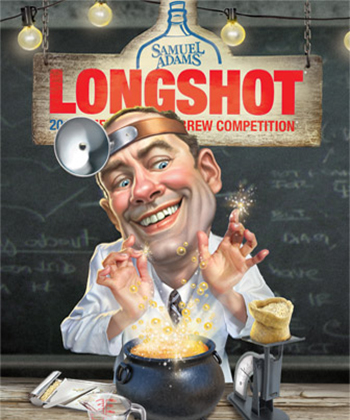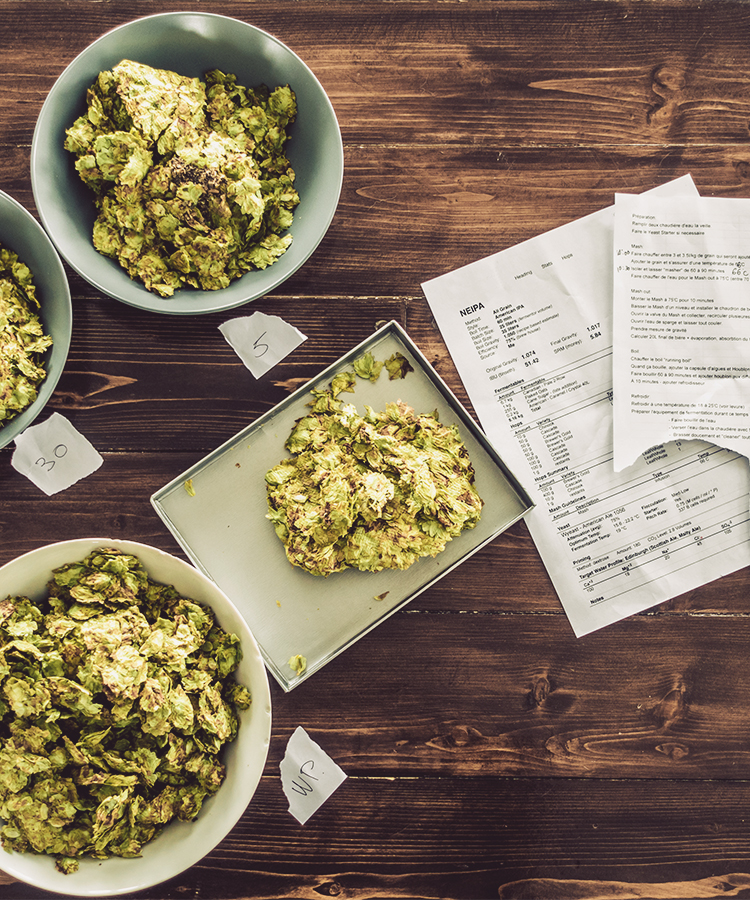
For the past 20 years, Sam Adams has held a homebrew competition called LongShot. Boston Brewing Company picks the winning beers and mass produces them, then distributes them around the United States. LongShot has launched the professional brewing careers of Don Oliver (now at Dust Bowl Brewing Co.), Mike Robinson (Newburyport Brewing Company), Cesar Marron (Sketchbook Brewing Co.), Tim Thomssen (Boiler Brewing Co.), and more.
What does it take to become one of the selected brewers out of thousands of entries? According to Boston Beer Company co-founder Jim Koch, the answer is simple: good beer. The craft beer scene is dramatically different than it was 20 years ago when LongShot started, but the goal, Koch tells me over email, is the same.
“I started the LongShot Competition in 1996 to recognize and support the homebrewing community,” Koch says. “After all, Boston Lager first started as a homebrew, much like many flagship beers of now professional craft brewers.”
This year, one of the three winners was Ohio native David Cousino. Cousino won with Barnstorm Saison, a 7.8 percent alcohol by volume saison that’s slightly floral, peppery, and surprisingly easy drinking for a high alcohol beer. I caught up with Cousino over the phone to learn what it takes to make an award winning homebrew.
An early interest and dedication
Cousino started brewing in the early 1990s while he was in pharmacy school at the University of Toledo in Ohio. He had just spent four years in the Air Force and was starting to try some of the early craft beers. Sam Adams Boston Lager had a big early influence on him, as did Anchor Steam.
“Then I heard from somebody you could make your own beer,” Cousino tells me.
Cousino was interested, but this was the 1990s. You couldn’t just Google “how to make beer.” There were other ways, though. “Before the internet, you’d go to the bookstore and get Charlie Papazian’s Complete Joy of Homebrewing,” Cousino recalled.
Which is exactly what he did. Along with the book, he bought a kit, syrup, yeast, bottles, and a fermenter. As Cousino puts it, “you don’t need fancy equipment,” just a pot, tubing, a fermenter, and a stove.
“I could hardly wait for that first batch,” Cousino says. “And then I got it, and it’s not great, but it’s not terrible. It tastes like beer. But then I just got hooked.”
The progression from beer to good beer
Cousino started improving his process step by step. He found a way to better control the temperature, then started using all grain and stopped using syrups. Then he messed around with recipes to make them his own and started kegging his beer instead of bottling it.

Look outside the major styles
Cousino took a break from brewing for a couple of years and returned with a passion for saison. The big IBU race in the IPA scene was fun, but saison was what he was most excited about when calls for entries into LongShot came out.
“I just decided to enter it, and a few weeks later I got an email that said I made it to the second round,” Cousino says.
His beer is primarily pilsner malt, with a small mix of wheat malt and Munich malt. He used Saiz hops and let the beer settle on its own rather than using fining ingredients. The simple, clean saison recipe was a winner.
If you make it big, trust the commercial brewers
Bringing a beer up to scale from small batch homebrew to a nationally distributed beer in the LongShot six-packs is no small feat. It was up to the breweres at Boston Beer Co. to match Cousino’s original flavor, and, according to the creator himself, they did a fine job.
“I don’t know how they do it, but I think they did great,” Cousino says. “I taste the commercial example and think, ‘That is pretty dead on.’ The mouthfeel, the taste, the smell — everything is pretty much exactly as the keg that I have at my house that I brewed.”
You can try Cousino’s Barnstorm Saison in Sam Adams LongShot six-packs along with five other competition beers.
